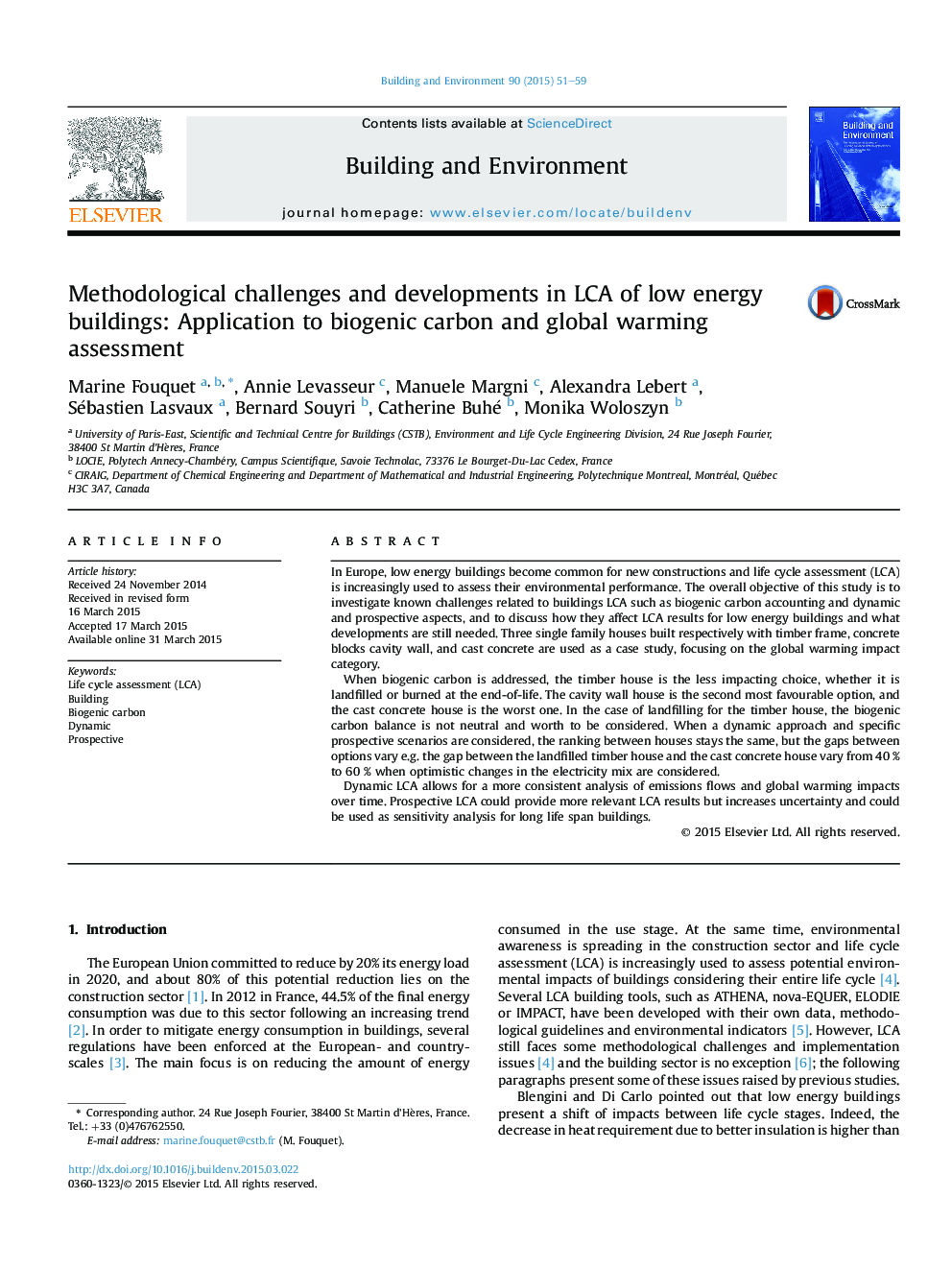| کد مقاله | کد نشریه | سال انتشار | مقاله انگلیسی | نسخه تمام متن |
|---|---|---|---|---|
| 247856 | 502530 | 2015 | 9 صفحه PDF | دانلود رایگان |

• Accounting for biogenic carbon in life-cycle assessment of low energy buildings.
• Applying dynamic and prospective aspects.
• In the case of landfilling for a timber house, the biogenic carbon balance is not neutral.
• Consistent analysis of emissions flows is obtained with dynamic LCA.
• Despite uncertainty, sensitivity analysis could be done thanks to prospective LCA.
In Europe, low energy buildings become common for new constructions and life cycle assessment (LCA) is increasingly used to assess their environmental performance. The overall objective of this study is to investigate known challenges related to buildings LCA such as biogenic carbon accounting and dynamic and prospective aspects, and to discuss how they affect LCA results for low energy buildings and what developments are still needed. Three single family houses built respectively with timber frame, concrete blocks cavity wall, and cast concrete are used as a case study, focusing on the global warming impact category.When biogenic carbon is addressed, the timber house is the less impacting choice, whether it is landfilled or burned at the end-of-life. The cavity wall house is the second most favourable option, and the cast concrete house is the worst one. In the case of landfilling for the timber house, the biogenic carbon balance is not neutral and worth to be considered. When a dynamic approach and specific prospective scenarios are considered, the ranking between houses stays the same, but the gaps between options vary e.g. the gap between the landfilled timber house and the cast concrete house vary from 40 % to 60 % when optimistic changes in the electricity mix are considered.Dynamic LCA allows for a more consistent analysis of emissions flows and global warming impacts over time. Prospective LCA could provide more relevant LCA results but increases uncertainty and could be used as sensitivity analysis for long life span buildings.
Journal: Building and Environment - Volume 90, August 2015, Pages 51–59